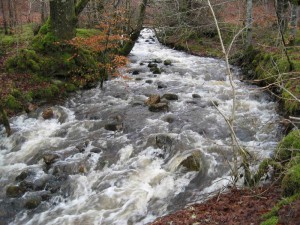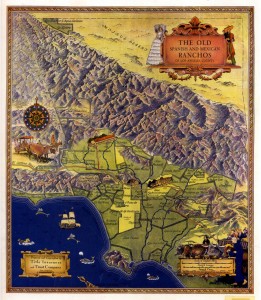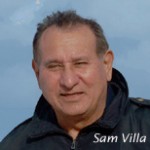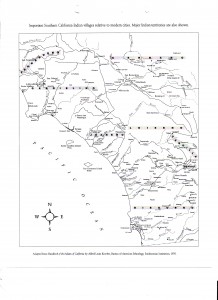
Gabrielino-Tongva villages were located in the Los Angeles Basin for thousands of years. These villages were located near and around the ever changing Los Angeles River, San Gabriel River, Santa Ana River and the coastal areas.
It was a time when there was a perfect balance of the ecosystem where fish and game were plentiful and the river ran free with fresh water from the mountains.
Gabrielino-Tongva villages/locations/rancherias/lodges sometimes overlapped at the boundaries with the Chumash, Tataviam, Serrano, Cahuilla, Juaneno and Luiseno Indians. During the relocation and assimilation years, many found refuge with other tribes.
This map shows the Old Spanish and Mexican Ranchos (1800’s).
Eras:
Spanish Era 1769-1821
——(Mission Era 1769-1833)
Mexican Era 1821-1848
American Era 1848-1880+
The locative suffix -nga, -ngna , is Gabrielino and is affixed to the village name. The suffix -bit, -vit, -pet, -bet , etc., is the Serrano Locative. Where both groups came together each applied its locative suffix to the village name. Johnston (1962: 10), however, quotes information from J. P. Harrington that the ending -vit, -bit or -pet “indicated the habitat of an individual, much as a New Yorker adds the ‘er’ to his city’s name.”
There are over 3,000 Gabrielino-Tongva archaeological sites in Los Angeles County, Orange County, and the Channel Islands.
This website is dedicated to finding and preserving the history of the Gabrielino-Tongva Native Americans of California. This site is an ongoing work in progress. Be sure and check back often for latest updates.
 Sam Villa
Sam Villa

